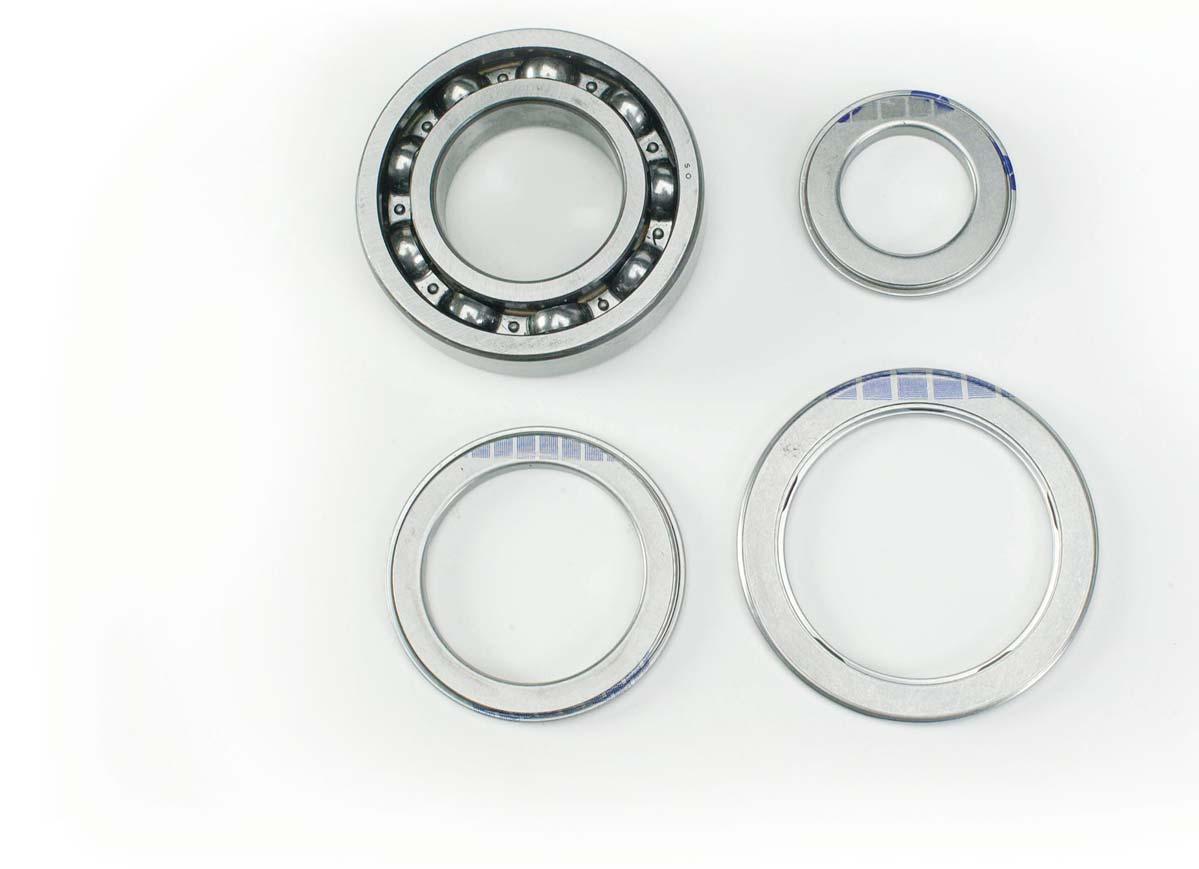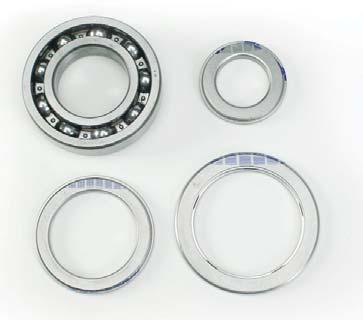
3 minute read
Bearings
A. Ball Bearing (Under
Retainer)
C. Retainer B. Bearing Race
A & B. Replace the bearing if any rollers/balls or races are rusted. Replace the bearing if balls/rollers have a feeling of looseness in the retainer or race compared to a new bearing. Replace the bearing if balls/rollers or races are discolored from heat, lack of lubrication or debris lapping. Replace the bearing if the balls/rollers or races are worn, galled or abraded. Replace the bearing if it catches or feels rough after being thoroughly cleaned. C. Replace the bearing if any retainer or retainer clip is fractured, bent, dented or missing. Replace the bearing if any retainer is rusted. Replace the bearing if there is a feeling of looseness between the retainer and ball/roller compared to a new bearing. Replace the bearing if it catches or feels rough after being thoroughly cleaned.
(continued)
BEARINGS (continued)
General Bearing Handling & Storage Dirt is the greatest single enemy of any antifriction bearing. Cleanliness - using clean tools in a clean environment - is at the top of the list of good service
techniques. Keep bearings sealed in original containers. Do not allow anyone to open boxes and handle bearings. A new bearing, if not protected, can quickly pick up enough dust even in an apparently clean place to seriously affect its life and operation. Minimize the possibility of rusting or lubricant aging in storage by using the oldest bearings in stock first. If any part of a bearing assembly has been compromised, replace all detail parts in the assembly (example - races, retainers and the bearing itself). Most bearings fail from preventable causes. Follow a regular system for inspection. Look for bearings with obvious damage first.
General Bearing Inspection
Do not try to judge the condition of a bearing until after cleaning. Do not spin bearings while cleaning them. Rotate them slowly while washing. Do not spin any bearings with air pressure. Put bearings under axial pressure while rotating to bring the balls and races firmly in contact with each other. For single row angular contact bearings, pressure must always be applied on thrust faces. When immersing in solvent, place bearings in a wire basket so there is plenty of space for cleaner to reach all parts. Tanks should have a screened false bottom to prevent settled debris from being stirred up into the bearings. Agitate the basket frequently until grease, oil or sludge is thoroughly loosened and can be flushed out. Blow solvent out of bearings using dry, filtered air. Be careful not to spin the bearing using air pressure. Lubricate bearings immediately after drying t avoid rust. NOTE: Wear eye protection and follow the appropriate safety guidelines when using solvents to clean components. Badly discolored rollers and races are usually a sign of inadequate lubrication. Replace badly discolored bearings. Moderately discolored rollers, cages and races do not necessarily mean that the bearing needs replacement. Technicians should always try to determine the root cause of failure when inspecting failed components. It’s important the root cause be identified and repaired to avoid the same failure in the future. Bearings
should be replaced for the following reasons:
Rusted rollers,balls or
raceways - rusted rollers, balls or raceways are usually caused by water passing worn or defective seals, or by condensation inside the housing. Fractured races - a fractured race can be caused by forcing a cocked bearing on or off a shaft. An excessively tight press fit can also cause a race to fracture.

Worn,galled or abraded
surfaces - worn, galled or abraded surfaces on a bearing may be the result of a loose fit on a shaft or in a housing. A locked bearing spinning on a shaft or in a housing can also create this type of damage.
General feeling of roughness -
inspect for a general feeling of roughness which remains unchanged by thorough cleaning. This condition generally indicates damage to raceways or rollers caused by dirt, pitting, brinelling or corrosion.
Catchy feeling - inspect for a catchy feeling at one or more points which repeated flushing will not remove. This condition generally indicates a spalled or fatigued spot on the race. Thorough flushing is necessary to be sure the catchy or rough feeling is not caused by foreign debris in the bearing. Excessive looseness - inspect for excessive looseness which indicates lapping by dirt or an abrasive contaminate in the lubricant. If in doubt, compare the end play against the end play of an identical new bearing. The races, balls and rollers will appear dull gray when lapped by dirt.










